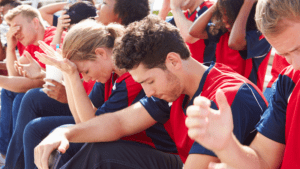Tips For ACL Injury Prevention In Female Players
Anterior Cruciate Ligament — three of the most terrifying words that can make us cringe, shudder, or, most importantly, end the career of a promising athlete. Even worse, these injuries appear as freak accidents or an unavoidable fate. While you can’t always control an awkward landing or vicious slide-tackle from an opponent, CoachUp has some simple exercises that can drastically decrease your chances of missing some serious time on the pitch.
Science!
Female athletes are two to eight times more likely to suffer from an ACL injury than their male counterparts depending on the sport. Specifically, females are at least four times as likely while playing soccer. An ACL tear usually occurs when an athlete changes directions rapidly, pivots, decelerates quickly, or lands from a jump. Of course, these are all natural, constantly repeating movements in soccer and are compulsory for success.
In order to fully understand why female ACL injury prevention is so important, it’s equally crucial to realize the fundamental difference between male and female bodies. Females, unfortunately, are inherently predisposed to factors that give them a high risk of ACL tears. According to some orthopedic surgeons, this injury has to do with the “Q angle” — the angle from which the upper leg bone connects to the lower leg bone. Since women naturally have wider hips, this angle is increased, adding more stress to the knee.
In addition to this, other studies have shown that an increased level of estrogen may cause more laxity, or looseness, in tendons, making it easier for your ACL to tear. But don’t panic yet! Preparing your body for the stresses that are common within soccer can strengthen your muscles and make these injuries as avoidable as possible. By following these five steps, your ACL will be stronger than ever!
Plyometrics
Plyometrics, aka jump training, involves lengthening and contracting your muscles quickly to exert maximum force. These exercises focus on the explosive qualities that most need to succeed on the pitch. One of the main causes of ACL injuries are rapid changes in speed and direction, a necessity in soccer, so stick with these exercises.
Improve Single Leg Balance Soccer players are constantly playing with their feet off the ground and that can be a recipe for disaster. Whether it’s an ill-positioned cleat in your landing space or an off-balanced fall, soccer players need to be careful about leaving their feet.
Often enough, soccer players land on one rather than both feet. By doing exercises such as single leg squats you can increase the strength and control of each leg. Building up the various muscles in each leg, will help support the rest of your body’s weight when it matters most. Try jumping and landing on one leg with your knee bent, then hold that position for a few seconds.
Maintain Good Quad To Hamstring Strength Ratio
Soccer players, naturally, tend to focus on strengthening their quadriceps, but it’s crucial to remember to love their hamstrings as well! When a much stronger muscle constantly puts strain on a weaker muscle, it becomes far more susceptible to injury. Try visiting a local university athletic training department, physical therapist, or hospital to inquire about getting a Biodex test done. This test measures the strength of your quad-hamstring ratio to determine whether or not you have any deficiencies in your workout.
Increase Your Level Of Control During Acceleration + Deceleration
One of the big differences between female and male soccer players is their ability to steady their upper body when jumping or changing directions. Woman tend to have their upper body sway to one side when they land or pivot, which places a greater strain on their planted knee. To prevent this from happening, focus on increasing your overall core strength.
(Related: Read about about coping with injuries here.)
Huddle Up
Most importantly, don’t wait to prevent these injuries! Bad habits are very hard to break, so start doing ACL injury prevention early and often — especially if you’re an athlete around the age of 11 or 12. This is when bodies are just beginning to change, and, not coincidentally, the same time that their risk for ACL tears increases. Inform and educate yourself and take the extra steps towards ACL prevention so you can succeed on the pitch without obstacles!
How useful was this post?
Click on a star to rate it!
Average rating 5 / 5. Vote count: 1
No votes so far! Be the first to rate this post.




